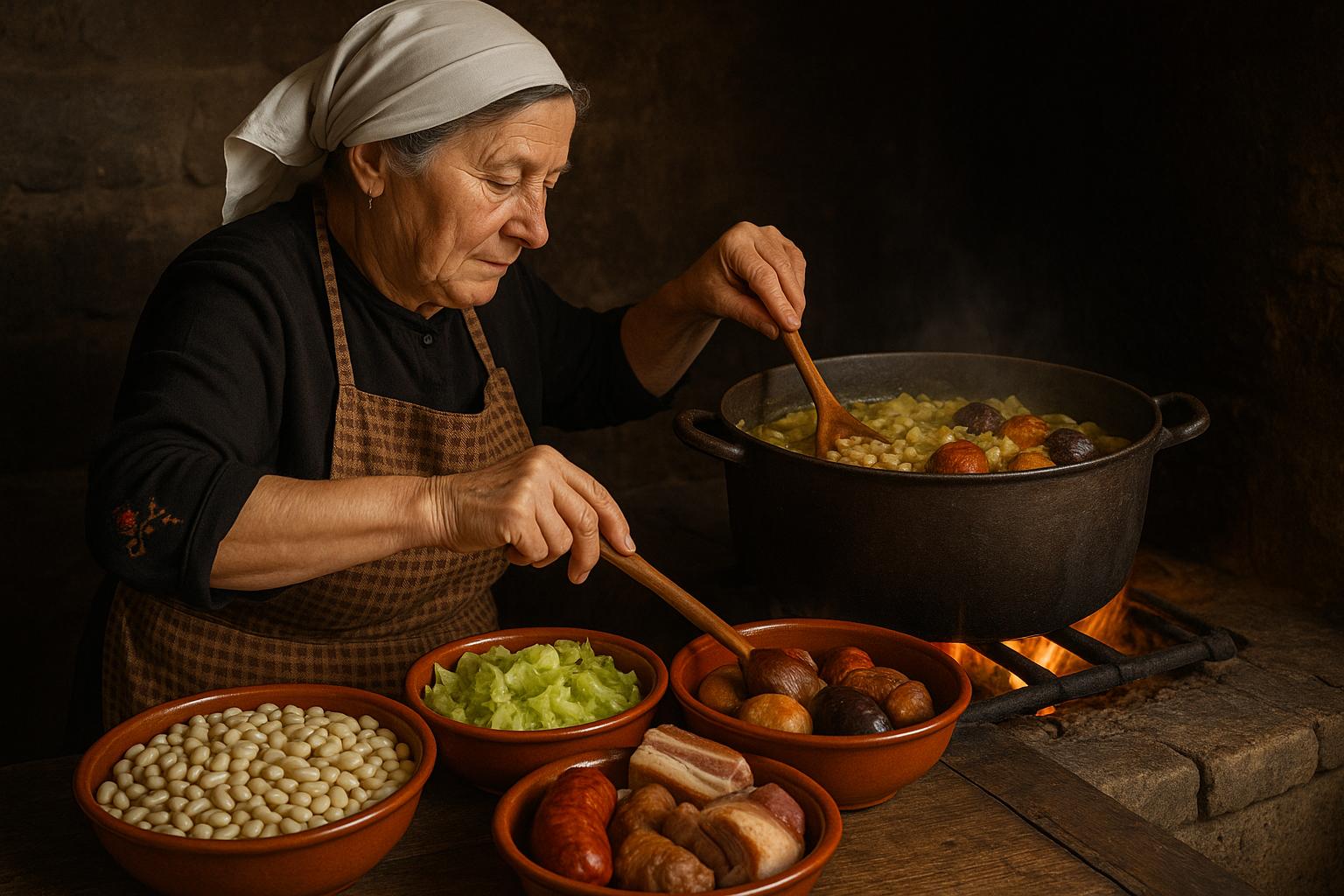
Cocido Montañés, translated as “mountain stew,” is a traditional Spanish dish hailing from the Cantabria region in northern Spain. This hearty stew is particularly associated with the mountainous areas, where it has been a staple for centuries due to its nourishing and filling properties suitable for the cold climate. The dish exemplifies the rich culinary heritage of the region, reflecting the agricultural and pastoral lifestyle of the Cantabrian people.
The main ingredients of Cocido Montañés include dried white beans and a variety of meats, particularly those derived from pork. Common meats used in this stew are chorizo, morcilla (blood sausage), pork ribs, and bacon. Sometimes beef may also be added. Vegetables such as cabbage, when incorporated, add another layer of flavor and nutrition.
The preparation of Cocido Montañés is a process that requires time and patience. Firstly, the beans are soaked overnight before being cooked slowly to ensure they are tender. The meats and sausages are added along with spices such as paprika, garlic, and bay leaves, which contribute to the dish’s flavorful broth.
The beans need to be carefully selected, often using locally grown varieties favored for their texture and flavor when cooked. This traditional approach highlights the importance of utilizing local ingredients, which not only supports regional agriculture but also adds authenticity to the dish. The process of slow cooking ensures that the meats and beans absorb the flavors of the spices, resulting in a rich and hearty stew.
In Cantabria, Cocido Montañés is much more than a mere dish; it is a part of the cultural identity. It reflects the traditional mountain lifestyle and is often served on special occasions and community gatherings. Families pass down recipes through generations, each with their unique variation, contributing to the rich diversity within the dish.
This cultural significance is rooted in the region’s history, where the dish was traditionally prepared to provide sustenance to those working in the harsh climates of the mountains. The sharing of Cocido Montañés at gatherings symbolizes communal bonding and is a testament to the region’s social customs. Each variation in recipe often tells a story of local family traditions, showcasing differing ingredients or methods passed down over generations.
Cocido Montañés is typically served as a main course and can be accompanied by crusty bread to soak up the rich broth. A robust red wine from the region complements the stew well, rounding out a traditional Cantabrian meal. Even though the dish is rooted in rural heritage, it can now be found in urban settings throughout Spain, often featured in restaurants specializing in traditional regional cuisine.
The serving of Cocido Montañés in urban areas marks the dish’s journey from remote mountains to bustling city centers, demonstrating its growing popularity across Spain. When served, the dish is often presented in a large communal pot, emphasizing the importance of sharing and enjoying a meal together. This practice strengthens the cultural ties and offers a way for people to connect with Cantabrian traditions, regardless of location.
For those interested in exploring more about Cantabrian culinary traditions, there are numerous resources available online and offline. One may visit Cantabria Tourism to gain more insight into the broader spectrum of the region’s gastronomic offerings. Engaging with local cooking classes or culinary tours when visiting the region provides a more hands-on experience in understanding and appreciating the depth of Cantabrian cuisine.
The exploration of Cantabrian cuisine extends beyond Cocido Montañés. The region offers a diverse array of dishes that highlight its rich agricultural resources and traditional cooking methods. From fresh seafood sourced from the Cantabrian Sea to artisanal cheeses produced in the hills, Cantabrian cuisine is as varied as the landscapes from which it originates.
Visiting Cantabria offers a unique opportunity for culinary enthusiasts to immerse themselves in local customs and flavors. Traditional markets and festivals provide a platform for locals and visitors alike to celebrate the region’s culinary heritage. Through such experiences, one gains a deeper understanding of how Cantabrian dishes have evolved and adapted over time while remaining true to their roots.
In summary, Cocido Montañés stands as a symbol of Cantabria’s culinary identity, encapsulating the region’s history, culture, and flavors. This dish, while simple in its ingredients and preparation, offers a profound glimpse into the pastoral life of Cantabria, making it a cherished part of the community’s gastronomic tradition. Whether enjoyed in a country home amidst the mountains or in a bustling restaurant in Madrid, Cocido Montañés continues to be a beloved representation of Spanish culinary heritage.